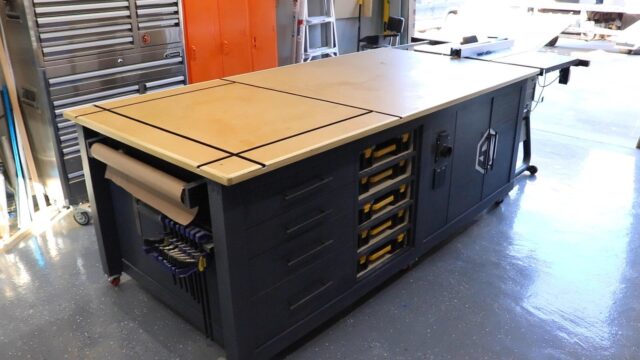Designing your own steel workbench may seem like a daunting task, but with the right tools and a little bit of creativity, you can build a workbench that is tailored to your specific needs and preferences. Here are some tips to help you get started:
1. Determine your needs
Before you start designing your workbench, it’s important to consider what you will be using it for. Do you need a large work surface to accommodate larger projects, or do you need plenty of storage space for tools and supplies? Will you be working with heavy equipment or machinery, or will you primarily be using hand tools? Answering these questions will help you determine the size, shape, and features of your workbench.
2. Choose your materials

Steel is a popular material for workbenches due to its strength and durability. When choosing your steel, consider the thickness and grade of the material. Thicker steel will provide more strength and support, but will also be more expensive. The grade of steel will determine its resistance to corrosion and wear, so be sure to choose a grade that is appropriate for your needs.
3. Decide on the design
There are many different designs for steel workbenches, from simple and basic to complex and multi-functional. Some popular designs include the traditional four-legged bench, the cabinet-style bench with drawers and shelves, and the mobile workbench on wheels. Consider your workspace and needs when deciding on the design that will work best for you.
4. Plan your work surface
The work surface of your bench is arguably the most important part, as it is where you will be doing most of your work. Consider the size and shape of the surface, as well as any additional features you may need, such as a vise or tool tray. Make sure the surface is level and sturdy enough to support the weight of your projects and equipment.
5. Add storage
Depending on your needs, you may want to include storage options on your workbench. This could include drawers, shelves, cabinets, or pegboards for hanging tools. Consider the amount of storage you need and the type of items you will be storing to determine the best storage solutions for your bench.
6. Consider mobility
If you need to move your workbench around your garage, consider adding wheels or casters to the legs. This will make it easier to move the bench around as needed, without having to disassemble it or lift it manually.
7. Don’t forget about lighting

Adequate lighting is essential for any workspace, and your garage workstation is no exception. Make sure to include task lighting on your workbench, such as a clamp-on light or a built-in overhead light. This will help you see your work clearly and reduce eye strain.
8. Personalize your bench
Finally, don’t be afraid to add your own personal touches to your workbench. This could include custom paint or decals, a built-in stereo system, or even a built-in mini-fridge. Make your workbench a reflection of your personality and interests, and you will enjoy using it even more.
By following these tips, you can design a steel workbench that is perfectly suited to your needs. Whether you’re a seasoned mechanic or just starting out with DIY projects, a well-designed workbench will make all the difference in the efficiency and productivity of your workspace.



